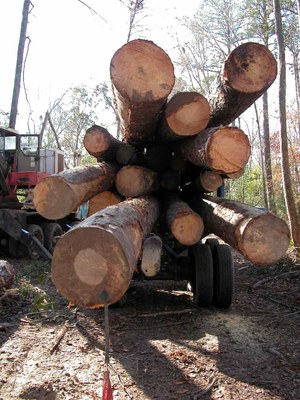History
Humans have used these forested lands for thousands of years, first for subsistence, later for financial gain.
Early residents
Archeological evidence indicates humans lived in the area of the park for several thousand years.
Caddo tribes
 The Caddoans were over two dozen tribes loosely joined into three confederacies: Hasinai, Kadohadacho and Natchitoches. The Hasinais inhabited the region of the middle and upper Neches and upper Angelina river valleys. The Neches River’s name comes from the Neches, one of the Caddoan tribes.
The Caddoans were over two dozen tribes loosely joined into three confederacies: Hasinai, Kadohadacho and Natchitoches. The Hasinais inhabited the region of the middle and upper Neches and upper Angelina river valleys. The Neches River’s name comes from the Neches, one of the Caddoan tribes.
Expert craftsmen, the Caddo made beautiful pottery from East Texas clay and often wove baskets and reed mats. Handmade musical instruments have been found, including drums and flutes.
Caddoans grew crops such as corn, squash, beans and tobacco. They stored grain for times of drought in the pots and baskets that they crafted. Game such as deer, rabbit, bear, javelina and fox supplemented what they grew. The woods also provided them with wild fruits, nuts and honey.
The Caddoans continued to live in the Neches and Angelina river valleys into the 1830s, when they were forced out of Texas into Oklahoma.
Anglo settlement
The first Anglo settlers moved into the area in the early 1820s. They found the Neches waterway loaded with ducks, fish and other game wildlife such as deer, turkey and black bear. The wide variety of trees and shrubs in the area provided fruit and nuts for food.
Their way of life changed little until the 1960s.
Big business
Steamboats versus trains
In the mid-1800s, the Neches River was a major commercial artery for the region. Steamboats opened up trade routes between East Texas, Galveston and New Orleans. In 1882, the first railroad came to Tyler County. It competed with the steamboats, and eventually put them out of business.
Lumberjacks
 The timber industry became big business in East Texas after the Civil War. In 1907, Texas ranked third among the lumber-producing states.
The timber industry became big business in East Texas after the Civil War. In 1907, Texas ranked third among the lumber-producing states.
The lumberjack’s saw left its mark on the lands that would eventually become Martin Dies, Jr. State Park. Most of the forest is second generation growth. However, you may spot some old growth trees in the park.
Crossing the river
A privately-owned toll ferry along State Highway 45 crossed the Neches River. It was unreliable when water levels were high.
On Feb. 12, 1943, the new Neches Bridge opened travel between Tyler and Jasper counties, and connected the land of the future Martin Dies Jr. State Park to U.S. Highway 190.
New reservoir
Sept. 12, 1947, officials broke ground on the Dam B (Steinhagen Reservoir). This dam promised jobs, economic development, recreation, flood control and water conservation.
Pineywoods park
In the 1960s, development of a new state park along the reservoir began, with support from local East Texans and their state senator, Martin Dies, Jr.
Martin Dies, Jr. State Park is a 705-acre recreation area nestled next to B.A. Steinhagen Reservoir between Woodville and Jasper. The park has three units in Jasper and Tyler counties. TPWD leased the park’s land from the U.S. Army Corps of Engineers in 1964, and officially opened it as Dam B State Park in 1965.
The senator
Born and raised in East Texas, Martin Dies, Jr. spent many summers as a boy at his father’s farm near Bevilport in Jasper County. He rode horses through the forest and river bottoms on the future lands of the park.
Dies graduated from Stephen F. Austin State University in 1942.
When the United States entered World War II, he volunteered for the Navy. During the war, he served as an officer aboard the destroyer USS Richard Suessens. Dies saw combat in Leyte Gulf and Okinawa, where he received multiple commendations.
After the war, he earned a law degree from Southern Methodist University and joined the family practice in Lufkin. Later, Dies served as a Texas state senator for eight years before becoming Secretary of State of Texas. In September of 1971, he became the Chief Justice of the Ninth Court of Appeals in Beaumont. He retired from the court in 1989.
Throughout his years of public service, he worked to improve the state park system. The Texas Parks and Wildlife Commission honored him by renaming Dam B State Park to Martin Dies, Jr. State Park in 1965.
